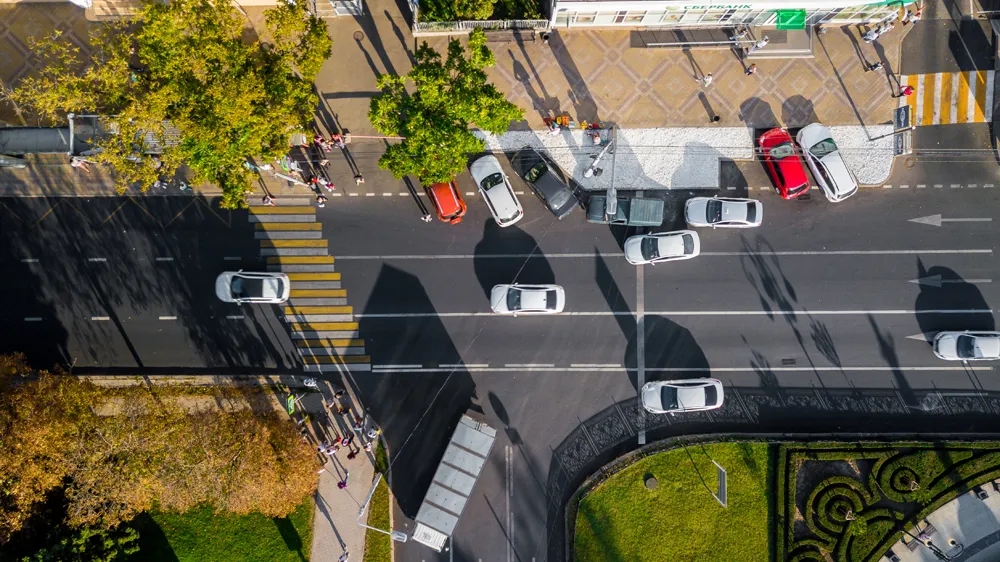Writing in the newsletter of TISPOL, an organisation established by the traffic police forces of Europe to improve road safety and law enforcement on the roads of Europe, Danijel Kumberger, National Traffic Police Unit, Slovenia, has revealed how smart the force has had to become to catch law-breaking truckers. As he points out, with automotive technical progress, it is vital to keep in touch with innovation because in modern vehicles, it is all about electronics, data sharing and processing of all kinds of
March 22, 2012
Read time: 3 mins
Writing in the newsletter of 650 TISPOL, an organisation established by the traffic police forces of Europe to improve road safety and law enforcement on the roads of Europe, Danijel Kumberger, National Traffic Police Unit, Slovenia, has revealed how smart the force has had to become to catch law-breaking truckers.
As he points out, with automotive technical progress, it is vital to keep in touch with innovation because in modern vehicles, it is all about electronics, data sharing and processing of all kinds of signals coming from almost every part of the vehicle. The signals are connected to a central computer unit on the vehicle that regulates, corrects, notices and reports if something is wrong or in conflict. All the actions of a vehicle’s components are monitored and errors are consequentially recorded when something is not functioning as it should.
Many of the conflicts are non-intended consequences when drivers or mechanics try to manipulate a vehicle part. Usually they chip-tune the engines to produce more power, boost the suspension to carry more load, and most commonly they try to manipulate the tachograph, to drive more and rest for less time.
Tachograph manipulations were very difficult to discover until now, Kumberger reports. However, today all vehicle ‘malfunctions’ are somehow visible to the on-board computer system and have an effect on other parts of the vehicle. For instance, when the tachograph is manipulated or not working properly, it automatically comes in conflict with other systems in vehicle, which still provide active signals because of the vehicle’s movement. All such conflicts are stored in the vehicle’s computer and in many cases, they have a timestamp.
Police Officers from Slovenia’s National Traffic Control Unit are very aware of that fact. Therefore they have started to use special equipment to monitor the entire electronic automotive architecture of vehicles that seem suspicious. In most cases, they have discovered many system errors, and when timestamps are checked, they mostly occur in late evenings or at nights when drivers are allegedly stationary ‘on daily rest’.
“Trucks should not have problems when they are parked and drivers are sleeping, thus the more plausible option is that the vehicle was on the move, while some of its systems were temporarily disabled. When we connect our diagnostic computer to the truck’s onboard diagnostic system, it all becomes very easy to explain and drivers suddenly become very co-operative,” says Danijel Kumberger. “They then have to face the fact that nothing can stay hidden and that their own truck has already told us all about their activities.”
As he points out, with automotive technical progress, it is vital to keep in touch with innovation because in modern vehicles, it is all about electronics, data sharing and processing of all kinds of signals coming from almost every part of the vehicle. The signals are connected to a central computer unit on the vehicle that regulates, corrects, notices and reports if something is wrong or in conflict. All the actions of a vehicle’s components are monitored and errors are consequentially recorded when something is not functioning as it should.
Many of the conflicts are non-intended consequences when drivers or mechanics try to manipulate a vehicle part. Usually they chip-tune the engines to produce more power, boost the suspension to carry more load, and most commonly they try to manipulate the tachograph, to drive more and rest for less time.
Tachograph manipulations were very difficult to discover until now, Kumberger reports. However, today all vehicle ‘malfunctions’ are somehow visible to the on-board computer system and have an effect on other parts of the vehicle. For instance, when the tachograph is manipulated or not working properly, it automatically comes in conflict with other systems in vehicle, which still provide active signals because of the vehicle’s movement. All such conflicts are stored in the vehicle’s computer and in many cases, they have a timestamp.
Police Officers from Slovenia’s National Traffic Control Unit are very aware of that fact. Therefore they have started to use special equipment to monitor the entire electronic automotive architecture of vehicles that seem suspicious. In most cases, they have discovered many system errors, and when timestamps are checked, they mostly occur in late evenings or at nights when drivers are allegedly stationary ‘on daily rest’.
“Trucks should not have problems when they are parked and drivers are sleeping, thus the more plausible option is that the vehicle was on the move, while some of its systems were temporarily disabled. When we connect our diagnostic computer to the truck’s onboard diagnostic system, it all becomes very easy to explain and drivers suddenly become very co-operative,” says Danijel Kumberger. “They then have to face the fact that nothing can stay hidden and that their own truck has already told us all about their activities.”









